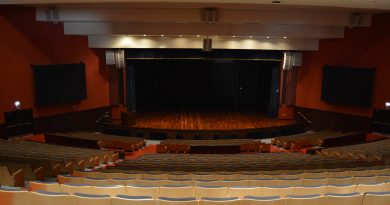Faten Hamama: An icon of Egypt’s gender and class struggles
BY MARY ARAVANI
Renowned Egyptian cinema icon Faten Hamama was an actress who played many roles, but it is her pivotal portrayal of women braving the odds that became the subject of Dina Heshmat’s lecture on translating gender and class in Egyptian cinema.
An Assistant Professor in the Department of Arab and Islamic Civilizations, Heshmat provided an insightful look into two of Hamama’s most iconic characters: Laila from Henry Barakat’s 1964 film Al Bab al Maftooh (The Open Door), and Fawzeya from Salah Abouseif’s 1963 film La Wakt lel Hob (Not Time for Love). Both characters portray a strong Egyptian female lead.
In both films, the female lead is shown to be a relatively independent woman who goes against society’s norms. Al Bab al Maftooh centers around Laila (Hamama) who is stuck in a miserable relationship with her fiancé imposed on her by an old-fashioned father.
By the end of the film, the woman manages to overcome her obstacles, and take a stand against her situation… she takes off her engagement ring and throws it, thus “opening the door” to her future with the man she actually loves.

La Wakt lel Hob, on the other hand, revolves around the tribulations of a female activist called Fawzeya (Hamama), and her relations with a male activist who inspires her called Hamza (Rushdy Abaza).
Heshmat pointed out that both films raise gender issues, deal with the society of the late 1940’s and early 1950’s, and were cinematic translations/adaptations of published written works.
Al Bab al Maftooh is originally a novel by Latifa Zayyat, which was later adapted into a film.
“Barakat leaves out the political narrative in the film,” said Heshmat. Rather than the deeper gender role issues discussed in the book, “the film focuses more on the facial expression and the emotions,” Heshmat continued.
As for La Wakt lel Hob, it is a film adaptation of Youssef Idris’s novel Keseit Hob (Love Story).
An obvious distinction between both stories’ books and film adaptations was that the latter tended to highlight romance over underlying political, class, and gender issues.
Heshmat also pointed out the differences between the two directors’ approach to their films. “Barakat tends to be more melodramatic,” she explained.
As for Abouseif, “[he] was successful with his portrayal of the middle, and lower class,” said Heshmat. She also went on to talk about the fact that his film ended with a scene in which a diverse group of people participated in protest, including women and children as well as men.
Although Abouseif tackled the activists’ issues in his film, it is clear he also chose to have Hamama’s character get driven to participate in protest as a result of her feelings towards Abaza’s character.
“Women’s participation remains a fact, but it is true that it is under documented,” concluded Heshmat.
Students found the lecture and character analysis enlightening.
“The lecture was really good, it left you sad a little bit because the roles you see women do today are very different than the roles they did yesterday. Also you could always kind of notice how the novel had a way of empowering women more so than the film,” said intended Political Science major Omar Farouk.



